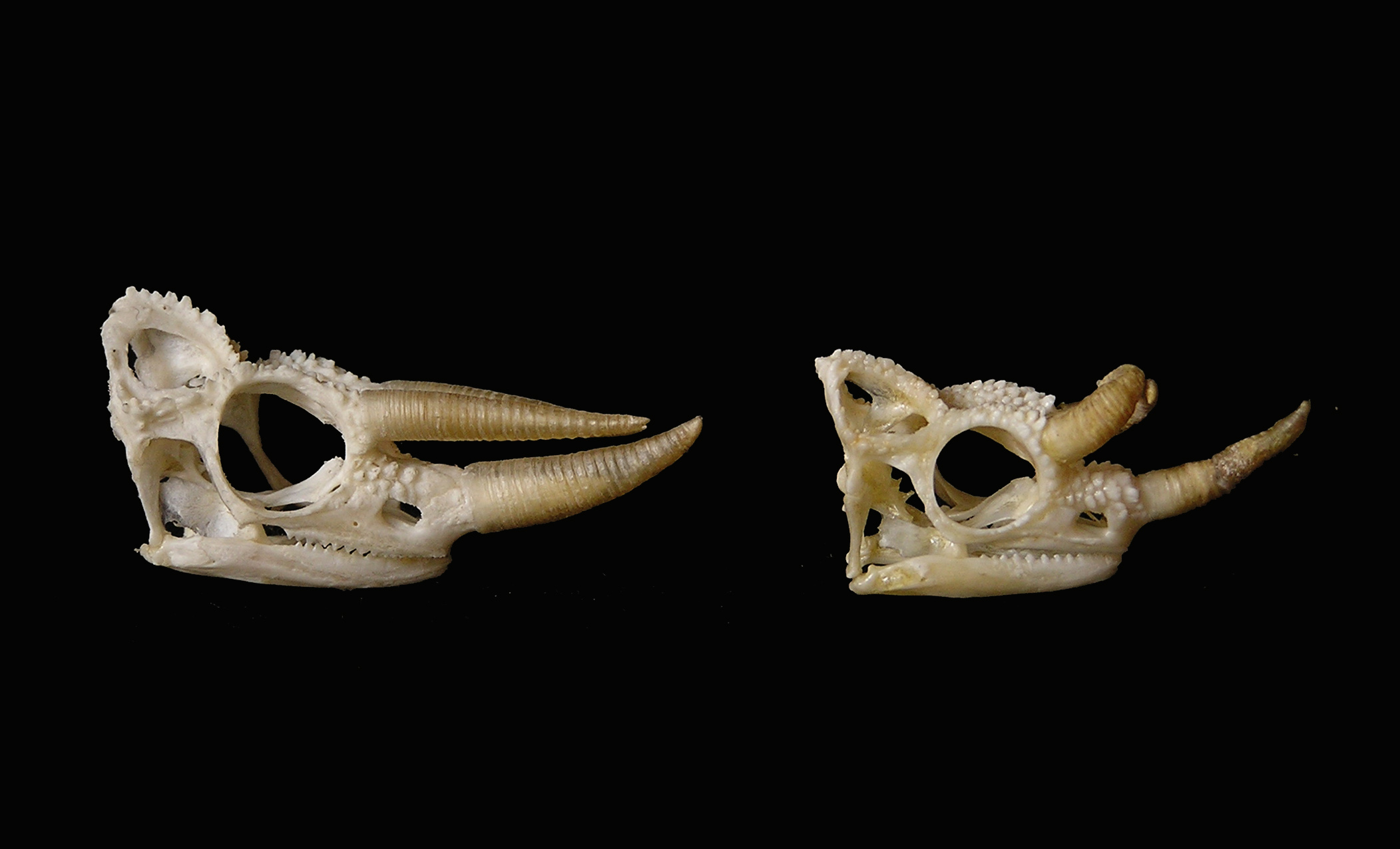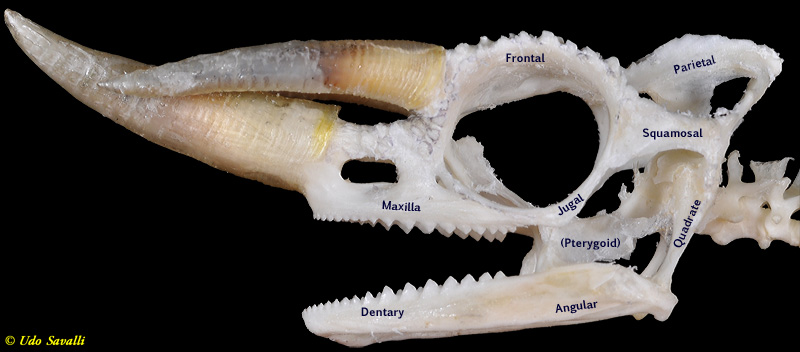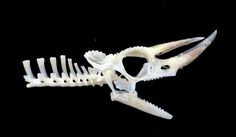SilverWolf
Member
Please do not move this to general photography because that is NOT what this is about. It is a general discussion, and not focused on the photographs. The purpose of the photographs are simply to initiate the question, so that the readers have something to look at on this actual thread and not have to look them up themselves. That is all.
Suppose for a moment, that that all chameleons are extinct. Every creature in the Chamaeleonidae family is extinct, and all we have are fossilized remains. Here are some photographs of chameleon skulls:



I chose jacksonii because their horns to most people make them look prehistoric. Remember, you only know chameleons as extinct creatures for this hypothetical scenario. If all we had was the skeleton, especially the skull, would you see chameleons the same way? Do you think that paleontologists would eventually conclude that they had eyes giving them panoramic vision, as both eyes had the capability of moving independently? Do you think that artists (or anyone) would draw and imagine creatures based off the skeletal structures, in an accurate manner? Or do you think they'd look much different? Really try and think of that, as though you've never seen a living chameleon before, or any chameleon with skin, if you would.
On a side note, if anyone has any links to photographs or more information regarding Anqingosaurus brevicephalus, please let me know.
Suppose for a moment, that that all chameleons are extinct. Every creature in the Chamaeleonidae family is extinct, and all we have are fossilized remains. Here are some photographs of chameleon skulls:



I chose jacksonii because their horns to most people make them look prehistoric. Remember, you only know chameleons as extinct creatures for this hypothetical scenario. If all we had was the skeleton, especially the skull, would you see chameleons the same way? Do you think that paleontologists would eventually conclude that they had eyes giving them panoramic vision, as both eyes had the capability of moving independently? Do you think that artists (or anyone) would draw and imagine creatures based off the skeletal structures, in an accurate manner? Or do you think they'd look much different? Really try and think of that, as though you've never seen a living chameleon before, or any chameleon with skin, if you would.
On a side note, if anyone has any links to photographs or more information regarding Anqingosaurus brevicephalus, please let me know.

